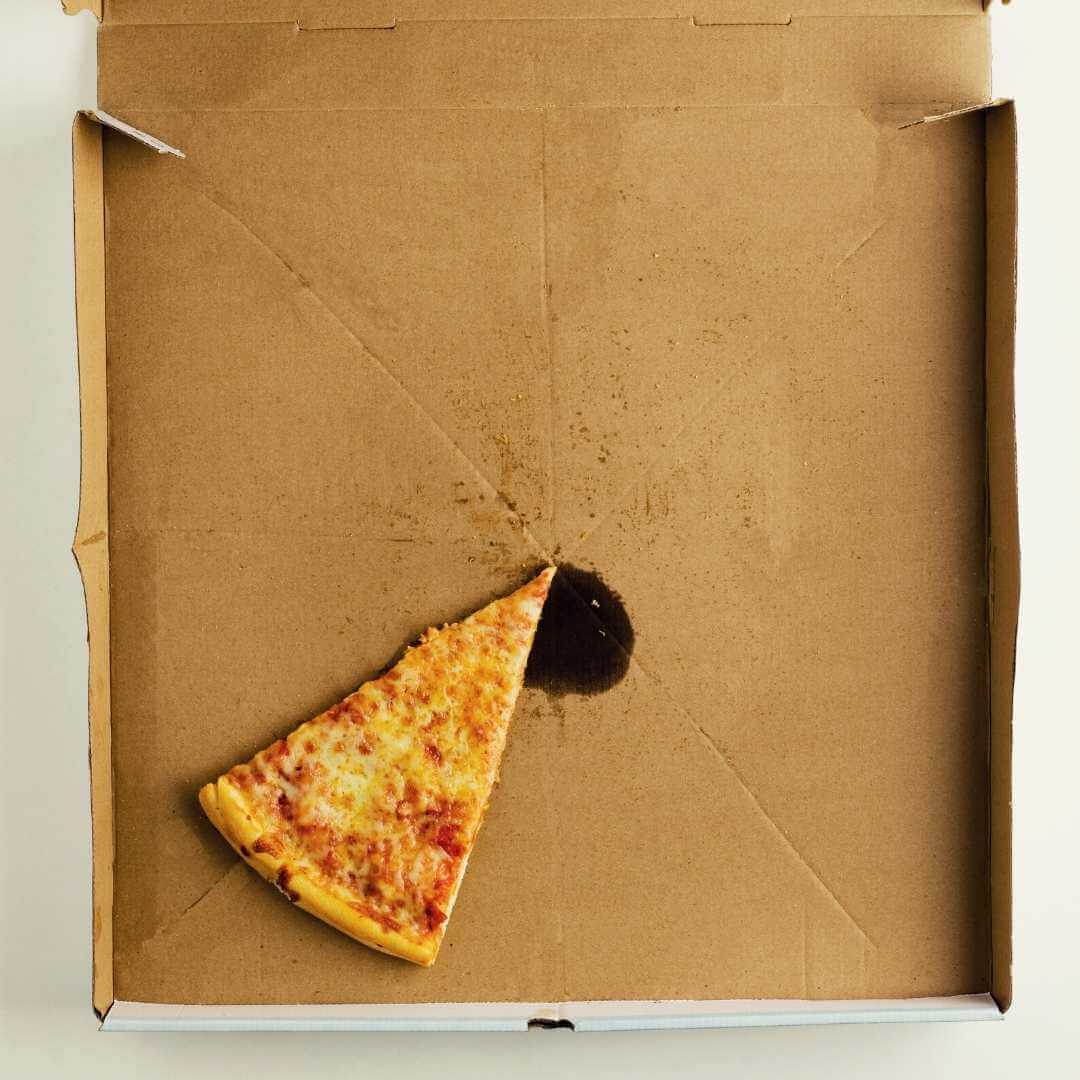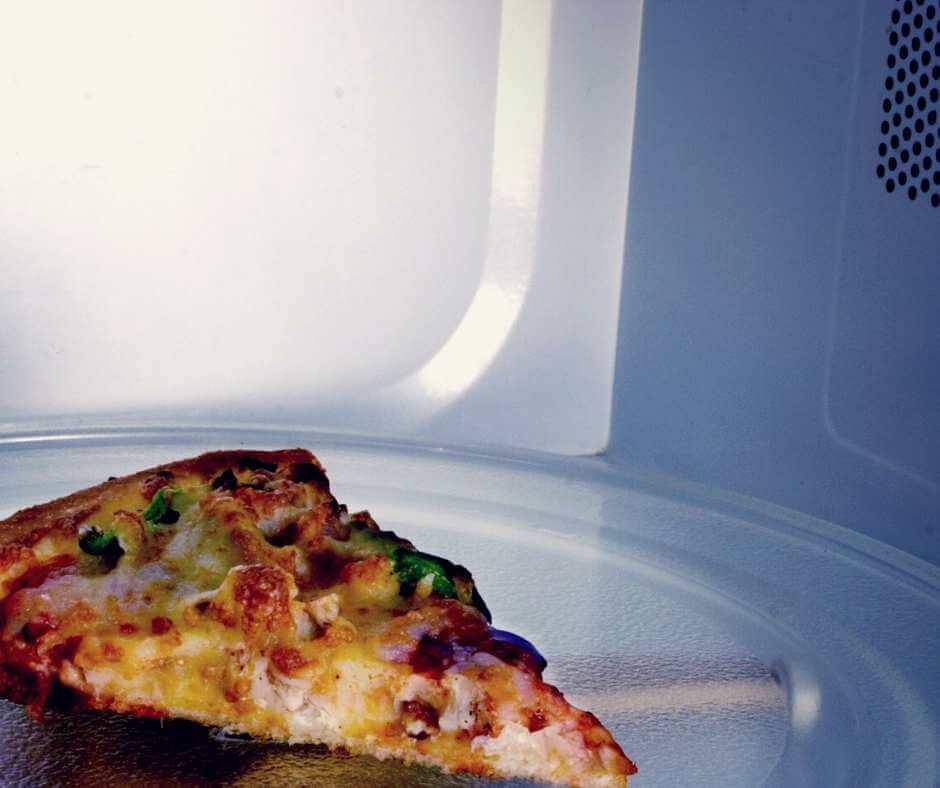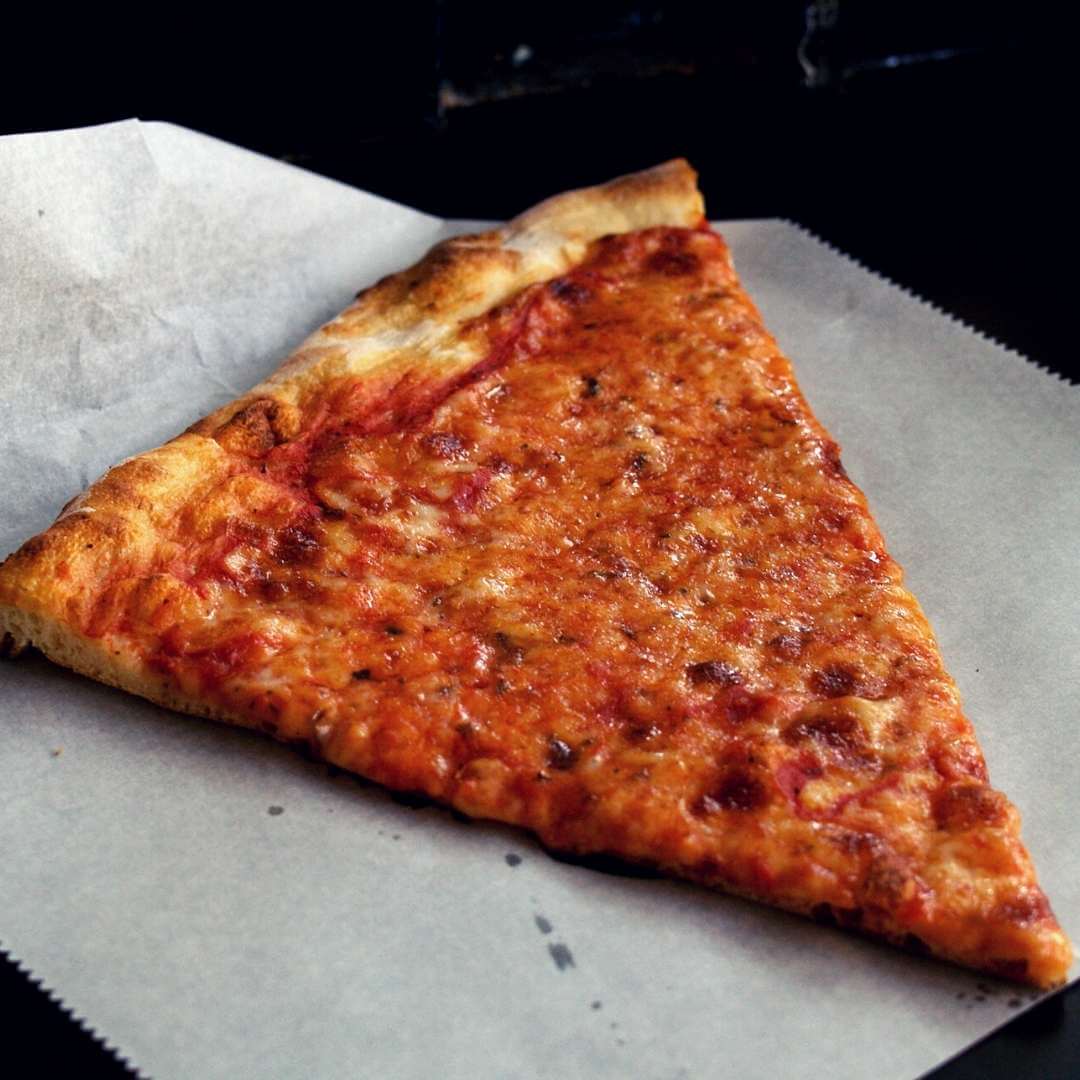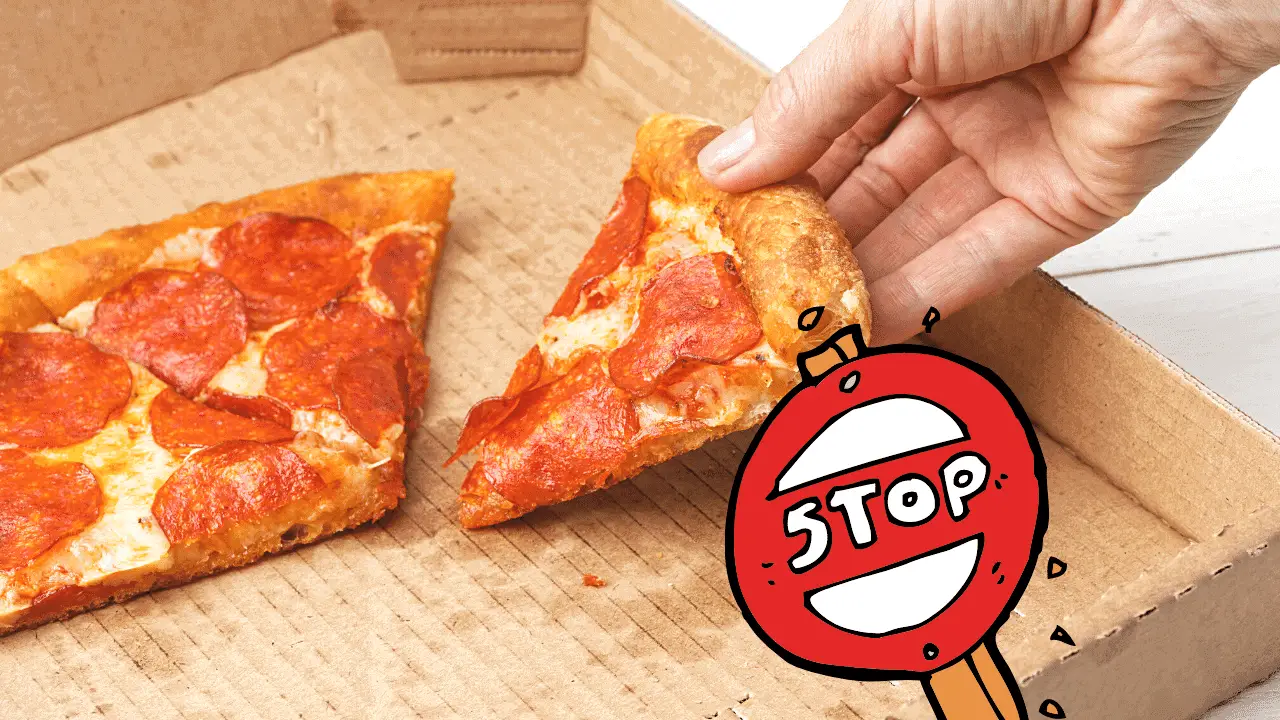If you’re anything like me, then you’ve probably – on multiple occasions – ordered a fresh hot pizza from your favorite pizzeria only to get caught up in the festivities of the evening and forget to store it safely away in the refrigerator.
Many a college student wouldn’t think twice about waking up at noon, stumbling to the kitchen, and grabbing a slice of Margherita or Meat-Lover’s without a second thought, but is it really safe to eat pizza that has been left out overnight?
It’s finally time to settle this age-old debate once and for all. Anecdotal evidence might suggest that enjoying a slice of leftover left-out ‘za is perfectly safe, but let’s take a look at what science has to say about the matter.
After all, it’s always better to be on the safer side of things rather than the sorry side. Anyone who has ever had a bout with food poisoning knows that it isn’t anything to try your luck with.

Let’s dig a little bit deeper into the matter. Not only am I going to show you whether cooked pizza left out overnight is safe to eat, but I’m going to find out whether just popping it in the microwave will kill off any bacteria that might have formed on it.
Beyond that, what is the best way to store and reheat leftover pizza? Stay tuned.
Can You Eat Pizza That Was Left Out Overnight?

Cooked food, including pizza, should never be left at room temperature for longer than two hours. When left out, bacteria will grow rapidly, and the pizza becomes unsafe to eat. Reheating pizza that has been left at room temperature for longer than two hours won’t be safe from bacteria.
I never like being the bearer of bad news, but simply put, pizza that has been left out overnight is not safe to eat. When you’re young, and fearless, and your immune system is firing at full throttle, your chances are better to fight off harmful bacteria that cause food poisoning, but that doesn’t mean you’re not susceptible to that potential reality.
The USDA says that perishable foods like pizza are not safe to eat when left out overnight. That is because the average room temperature falls between 40°F (4.4°C) and 140°F (60°C), what is called the ‘Danger Zone.’ Within these temperature ranges, bacteria double in numbers in as little as 20 minutes. This means that microorganisms that can make you sick begin to grow and multiply exponentially at a very quick pace. [1]
Some varieties of bacteria that can make you ill include:
- Staphylococcus aureus.
- Salmonella Enteritidis.
- Escherichia coli (E-coli).
- Campylobacter.
It is also recommended that you never leave food out for more than 2 hours without refrigeration. If it is above 90°F (32°C), then you should toss food after 1 hour. This means that you should be very careful and consider food safety when you are at picnics, barbecues, or outdoor parties – especially in the summertime.
There is nothing about pizza that makes it less susceptible to the harmful build-up of these kinds of bacteria.
In fact, the reality that pizza often includes a variety of perishable toppings like chicken, meats, cheeses, and even tomato sauce means that it is more prone to bacterial growth. That being said, even vegetarian or vegan pizza shouldn’t be left out for more than 2 hours.
Can’t I Just Reheat The Pizza That Was Left Out Overnight?
It sure looks like your pretty attached to that pizza pie you got there. I don’t blame you. Pizza is truly one of the absolute goods in the universe. That might not be provable by science, but we all know it to be true in our hearts.
It is also true that heat over 140°F (60°C) kills most forms of bacteria, especially when it’s applied for extended periods of time. Still, it’s no guarantee that reheating pizza that was left out for a long time will completely render it safe to consume.
Bacteria like Escherichia coli and Salmonella die after reaching around 140°F (60°C) – 160°F (71°C), but Staphylococcus aureus, on the other hand, is rather heat-resistant and won’t be eradicated by typical cooking temperatures, according to researchers at Ohio State University.
Will Microwaving Kill Bacteria On Left-Out Pizza?

Your microwave doesn’t do anything special in the way of killing bacteria. It’s the heat that it produces that does the bacterial killing. As I just mentioned, however, merely reheating your left-out pizza doesn’t guarantee that it will kill every bacteria responsible for food poisoning.
For example, Staphylococcus aureus would take a prolonged heat of 375°F (190°C) or more for 30 minutes to kill the bacterium completely. If you were able to reach those kinds of temperatures for that duration of time in your microwave, that would surely render your pizza burnt to a crisp.
So, I suppose if you are really into eating charcoal, then go for it, but otherwise, just throw out the pizza.
Best Ways To Store Leftover Pizza

We’ve already come to a mutual understanding that pizza is one of the greatest culinary creations in the universe. As such, you want to protect your investment.
If you’re going to order a pizza or even if you’re feeling crafty and make one at home, it’s best to plan on preserving it if you aren’t going to finish it all in one sitting.
Fortunately, I have a lot of experience with this subject. I don’t mean to brag, but I pride myself on being a pizza connoisseur. I take my pizza very seriously and will do everything in my power to make sure it doesn’t just go to waste. I’m no theologian, but I’m pretty sure that wasting pizza might be some kind of mortal sin.
Refrigerating
Sometimes you order more than you can eat in a single session – or perhaps you’re a clever one and order extra just for leftover’s sake like myself. Either way, the worst thing you can do is just shove the whole pizza – box and all – straight into the fridge.
The circulating air combined with the dry cardboard box will dehydrate the crust, along with the toppings in no time. You wouldn’t want to disrespect pizza like that, now would you?
I’ll give you a little pro tip. When in doubt, stack and wrap.
- Place individual slices on a plate and then place a layer of wax paper, aluminum foil, or parchment paper on top of that first layer.
- Keep on layering until all your precious pizza is on the plate.
- Tightly wrap the towering stack with plastic wrap and place it in the refrigerator.
Freezing
If you happen to have leftover pizza that you don’t plan to consume immediately but rather after a few days, it’s important to store the slices in the freezer within two hours of delivery or after they come out of the oven. To prevent bacteria growth, it’s crucial to set your freezer temperature to the correct level, which is -18°C (0°F).
The FDA’s storing and freezing recommendations suggest that you can safely freeze pizza for 1 to 2 months. It won’t likely hurt you to freeze it longer than this, but it will start to degrade in flavor and texture due to ice crystallization and the ill effects of freezer burn.
For optimum results, store frozen pizza in a sealed ziplock bag, with each slice being separated by a layer of wax paper or individually wrapped in cellophane wrap.
Even though you freeze your pizza, It will begin to develop bacteria when you thaw it. You can combat this unfortunate reality by thawing your pie in the refrigerator instead of setting it out on the kitchen counter. Your fridge should be set at 40°F (4.4°C) or lower to prevent bacteria from growing while the pizza is in storage and thawing.
Read Also: 20 Clever Ways To Make Food Last Longer.
Reheating Leftover Pizza
The reheating tips below are, of course, taking into account that you stored your slices correctly. If you missed the correct storage part, then scroll up a bit.

Sure, you can just pop a slice in the microwave and be munching on the cheesy goodness in a matter of seconds, but that’s not the only way you can resurrect a delectable slice of leftover pizza.
I’m going to show you my 3 favorite ways to reheat a slice or two.
Reheating In A Microwave
Microwaving your leftover pizza is perfect for when you don’t have much time on your hands. Some microwaves even have a preset button dedicated to the activity, but I recommend taking a couple of extra seconds to ensure that your end result is just as good as it was the night before.
- Place a slice on a plate (never on a piece of paper towel – unless you want it to stick).
- Put it in the microwave – add a cup of water next to the plate to help keep the crust crisp and the toppings moist.
- Cook it on high for 30 seconds or more, depending on the power of your microwave output.
Reheating In A Toaster Oven
Toaster ovens provide another great option for reheating uneaten slices. They heat much quicker than traditional convection ovens and bring your pizza back to a state of crispy ooey-gooey perfection.
- Preheat your toaster oven to 350°F (176°C).
- Place a slice directly on the rack or on a small cookie sheet.
- Heat for 3 to 5 minutes while watching it closely.
- Remove with tongues or a metal spatula.
Reheating In A Skillet
I can’t begin to express how much I think that this is the best way to reheat pizza. There are times that I’ve reheated pizza this way, only to find it to be tastier than it was the evening prior.
I recommend using a cast-iron skillet if you have one, but a non-stick or ceramic one will also suffice.
- Grease the skillet very lightly with butter or coconut oil.
- Place a slice or two onto the skillet crust side down.
- Cover the skillet with a lid.
- Turn on your burner to medium-high heat.
- Check back in 7 to 8 minutes – do not remove the lid until finished.
- Take off the heat and allow to cool for 1-2 minutes before enjoying.
Read Also: Is It Safe To Put Ziploc Bag Full of Food in Crockpot – What Could Possibly Go Wrong?
Final Statement
I know all too well how much pizza means to you but take my advice, if you accidentally left your pie out all night, go ahead and throw it away. Food poisoning is nothing to scoff at.
Sure, you might be young and full of vigor with the immune system of a Greecian god, and if you really insist upon taking the risk, then that’s on you.
Everyone else, however, should do their best to practice food safety. Take the time to properly store your leftover pizza in the refrigerator or freezer.
Take solace in the fact that there are many different ways to reheat uneaten pizza so that it tastes just as good as it did when you first ordered it or pulled it out of the oven.
Be safe out there, my fellow pizza lovers.
Read Also: Refrigerator Door Left Open? Here Is What You Should Do.

A rather significant typo: “… freezer is set at 0°F (17)°C, …”